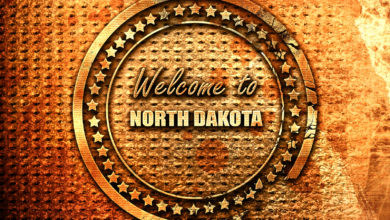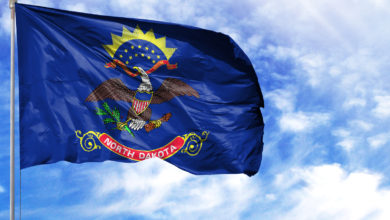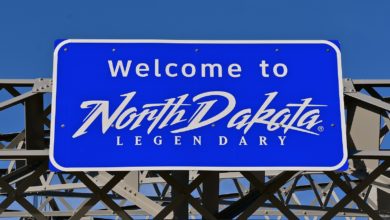Explore the Natural Wonders of the Peace Garden State
You will not want to miss these spectacular sights in North Dakota
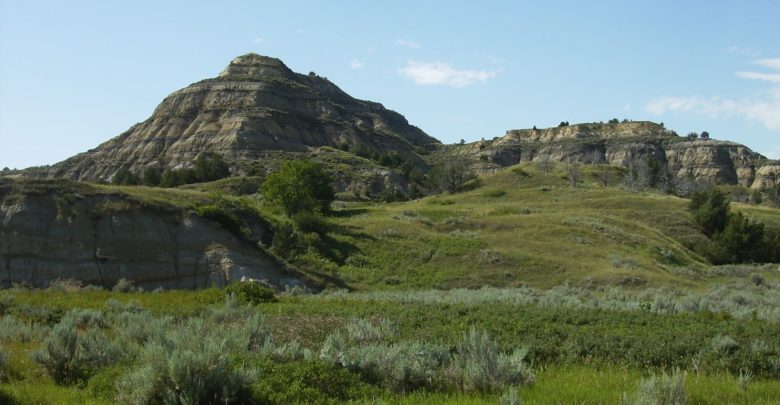
You might think that North Dakota is a land with barren landscapes and very few breathtaking views. The Peace Garden State has many natural wonders and beautiful locations. You can explore the rugged landscapes, deep valleys, and green scenery on this list of natural wonders of North Dakota.
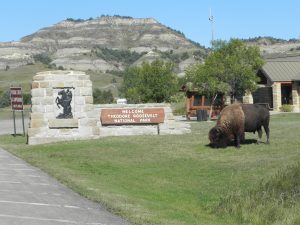
Theodore Roosevelt National Park
Medora
If you are starting your journey of the best natural wonders, you have to start in North Dakota’s national park: Theodore Roosevelt National Park. This park is unique as it is separated into three geographical areas of badlands, including the South Unit, North Unit, and Elkhorn Ranch Unit. The park is massive and covers about 70,446 acres of land. As you can tell, the park’s namesake is U.S. President (and notable conservationist), Theodore Roosevelt. This park is the only one named after a single person in the American national park system.
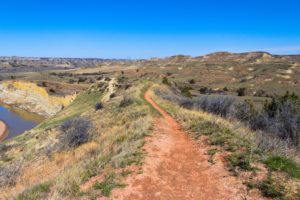
In the North and South Units, there are about 100 miles of horse and foot trails. You have ample opportunities for backcountry hiking, camping, and wildlife viewing. There are only three developed campgrounds throughout the entire park, and they include the Juniper Campground (North Unit), Cottonwood Campground (South Unit), and Roundup Group Horse Campground (South Unit).
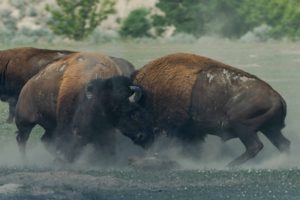
There are a variety of animals that call the park their home. You can see many Great Plains wildlife, such as feral horses, bighorn sheep, elk, bison, coyotes, and white-tailed deer. Bird watchers will not want to miss an opportunity to view the sharp-tailed grouse, wild turkeys, and golden eagles throughout the park. This park has another notable distinction: they have reintroduced some species to the local area, like the bison and bighorn sheep. The park’s scenery changes throughout the year with brown grass from fall to winter but then an explosion of color in the spring and summer.
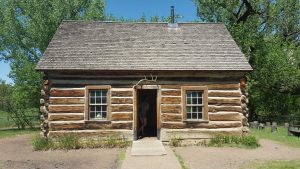
This area played an essential part in the life of the President. You can learn about his conservation efforts at the museum in the South Unit Visitor Center. The Maltese Cross Cabin is also open year-round for visitors at the South Unit too. If you are a big fan of Roosevelt, then you will not want to miss a trip to Elkhorn Ranch. It is located 35 miles north of Medora and only accessible by gravel roads. There are some days that the road is closed, so you will want to check with the rangers before heading out. When you do get to the location, you can see the preserved ranch house’s foundation and other buildings in the area. Unfortunately, you cannot visit the actual ranch house. The entire house was removed and repurposed once Roosevelt left the area. Whether you are there to learn about our former President or want a glimpse at some wildlife, Theodore Roosevelt National Park is a can’t miss stop in North Dakota.
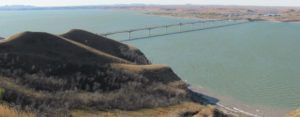
Crow Flies High State Recreational Area
Mountrail County
At one time, North Dakota was home to a national monument known as the Verendrye National Monument. The spot honored the 1742-43 expedition of the Verendrye brothers, who were the first white men to enter the area at the place marked Crow Flies High Butte. From 1917 to 1956, the land was federally protected. However, that distinction was withdrawn in 1956 with some doubt that the historic event even took place at this spot. The federal government transferred the land rights to the State of North Dakota, and the Lake Sakakawea reservoir eventually flooded the surrounding area. However, new research has shown the Crow Flies High Butte was the actual site of Verendryes’ trek to view the Little Missouri Valley in 1742. Despite all the miscommunication, you can still visit the State Recreational Area. It is now a day-use park that gives you some spectacular views of Lake Sakakawea. While you are there, you can learn about the local tribes and how the area was a lookout point for Lewis and Clark. Many people travel here for the magnificent panorama of the lake and to hike along the towering butte. On some days, you can even see a glimpse of the lost town of Sanish peeking through the water.
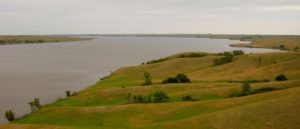
Upper Souris National Wildlife Refuge
Carpio
If you think that North Dakota is nothing more than badlands, then you will want to stop at Upper Souris National Wildlife Refuge. Located on a river near Minot, this refuge has some of the most beautiful views in the entire state. In 1935, the federal government established the refuge as a breeding ground for birds and other wildlife. There are over 32,092 acres on the sanctuary with many different types of terrains, including fertile floodplains, river bottom woodlands, native mixed-grass hills, and steep coulees. The Souris River basin is an integral part of the natural and cultural history of the state, and the North American mid-continent prairies and plains.
You can visit here throughout the year to experience the natural wonder of the state. In the summer, you will see an abundance of wildflowers filling the valleys. With all those flowers, there are plenty of butterflies throughout the park, and it is one of the few places for butterfly research in North Dakota. Since the area is primarily wetland, there are thousands of birds that travel through the park during certain times of the year. If you love the outdoors, you will definitely want to spend some time at this spot. You can participate in fishing, kayaking, or canoeing along the Souris River. Many people also head over to the refuge to explore the foothills. If you would rather stay in the car, there is even an auto trail that will take you to some spectacular sights in the area.
North Dakota is filled with many natural wonders, and you will not want to miss your opportunity to view them on your next trip. Make sure to visit these exciting locations when you head to the Peace Garden State.


